



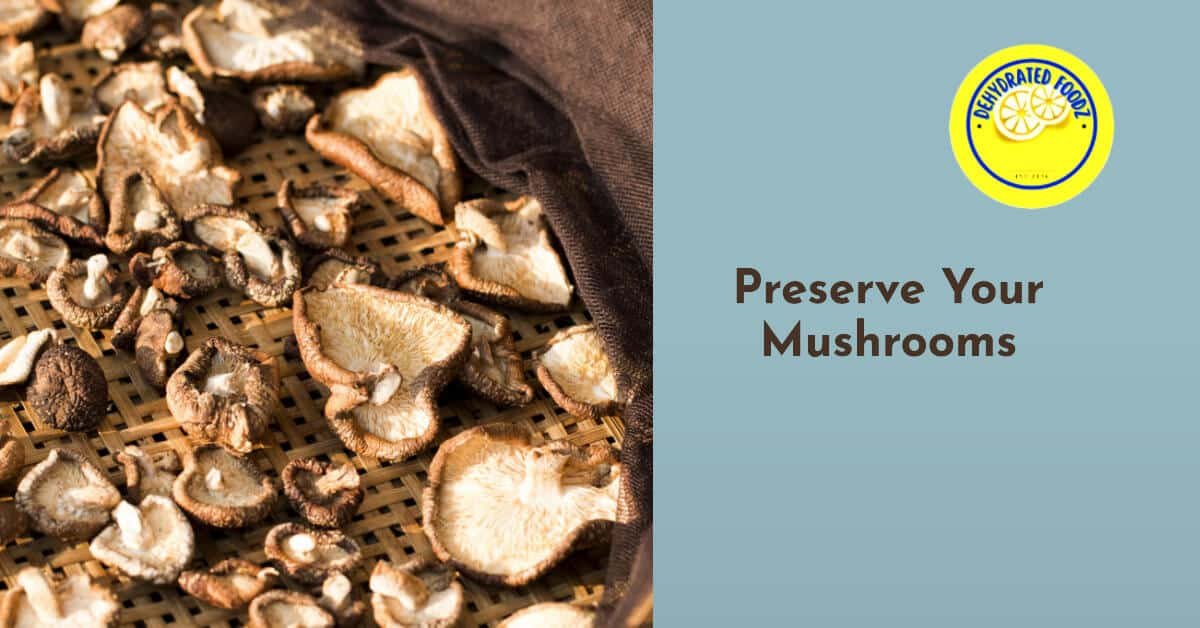
Do you have a bountiful harvest of mushrooms and want to preserve them for future use? You don’t need a fancy dehydrator to accomplish this! In this blog post, we’ll explore various methods on how to dry mushrooms without a dehydrator, ensuring you can enjoy their delicious flavors and nutritional benefits year-round.
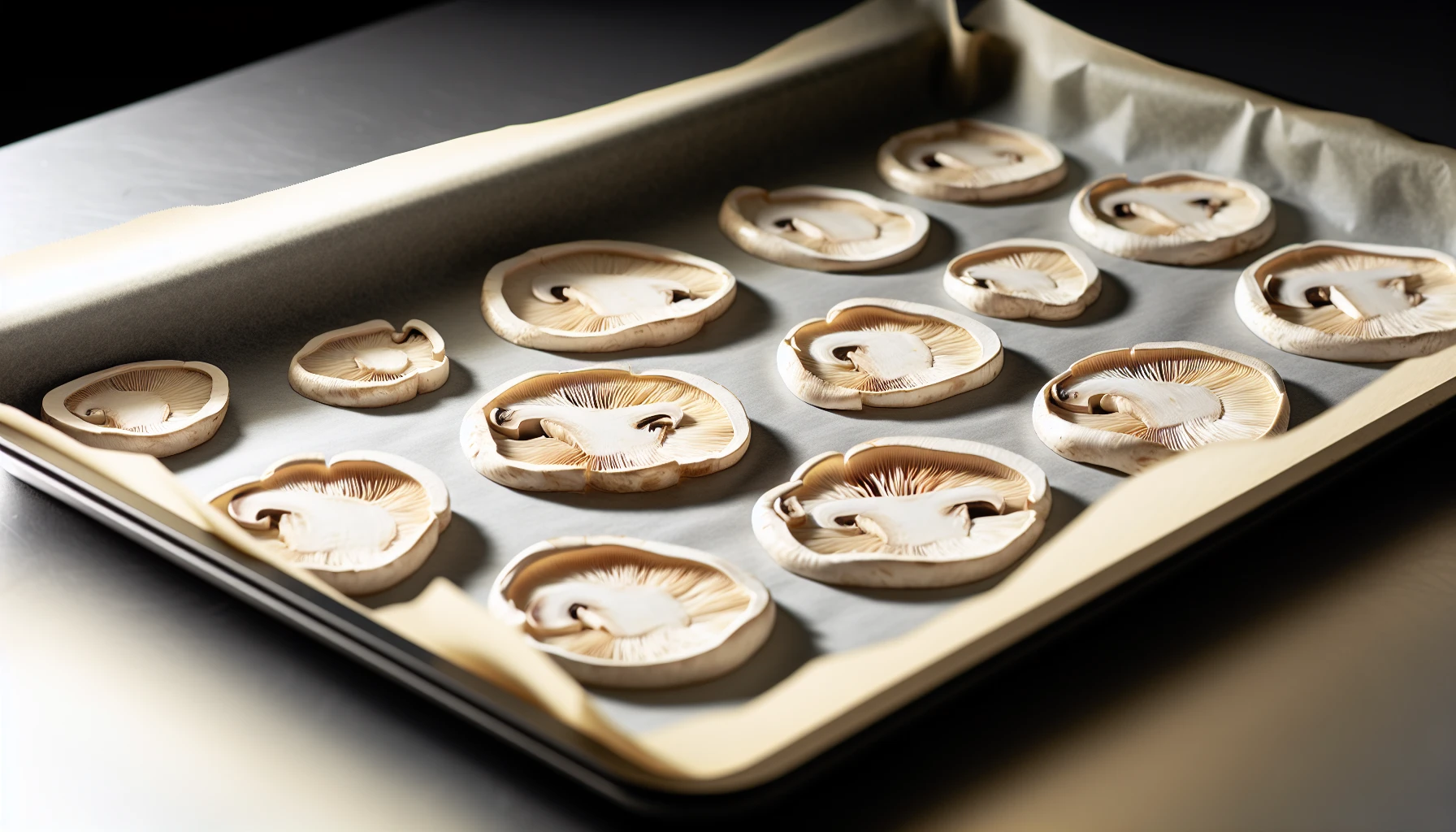
Utilizing your oven to dry mushrooms is a simple and effective method. The secret to achieving perfectly dried mushrooms lies in the preparation, arrangement, and monitoring during the drying process.
This technique is especially helpful for those without a food dehydrator or living in regions with high humidity levels, as it helps to achieve a cracker dry state.
Start your oven-drying process by preheating your oven to around 130ºF/54ºC and arranging a parchment-lined baking sheet. Lining the baking sheet with parchment paper not only prevents sticking but also ensures even heat distribution, which is particularly useful when drying shiitake mushrooms to maintain their shape and texture. Once dried, these delectable dried shiitake mushrooms can be used in various recipes.
Once your oven and baking sheet are ready, clean the fresh mushrooms and pat them dry with a paper towel or let them air dry on a kitchen towel.
Arrange the mushroom slices in a single layer on the parchment paper, ensuring there’s enough space between them for adequate air circulation. Remember, proper arrangement is key to achieving perfectly dehydrated mushrooms without overlaps or clumps.
For uniform dryness and optimal results, it’s necessary to monitor and flip the mushroom slices frequently during the oven-drying process. Keep the oven door slightly ajar to allow moisture to escape and maintain proper airflow.
Flip the mushrooms every 1-2 hours to ensure they dehydrate mushrooms evenly and reach the desired level of dehydration.
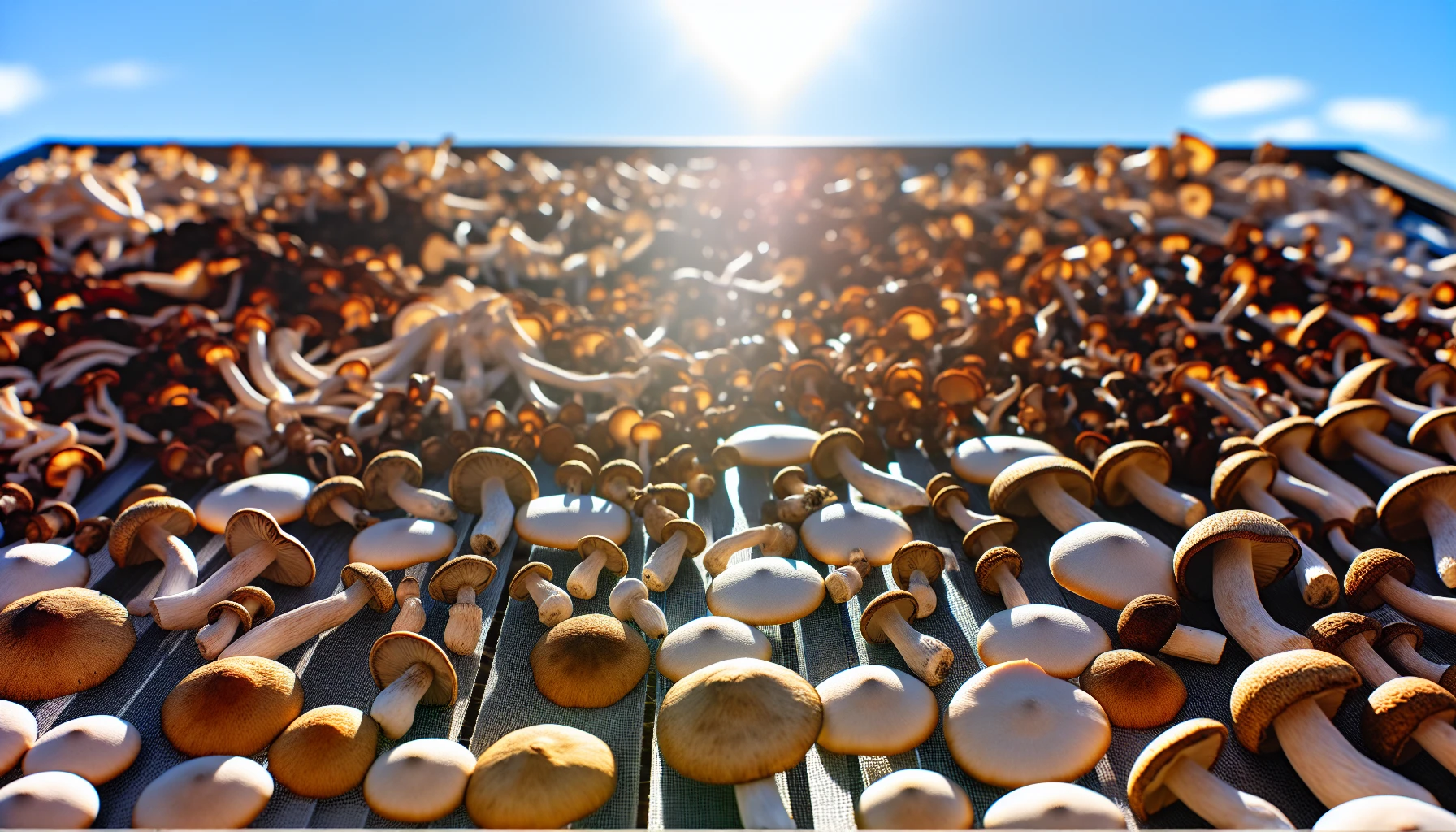
Sun-drying is another natural method to preserve your mushrooms and takes advantage of the sun’s warmth and drying power. This method requires careful preparation, an ideal location, and protection during the drying process to ensure the best results. Plus, sun-drying mushrooms can boost their vitamin D levels, making them even more beneficial for your health.
The key to successful sun-drying is finding a sunny, well-ventilated location. Ideally, choose a spot that receives direct sunlight for 8-10 hours per day. Ensure the area has good airflow to promote even drying and prevent the growth of mold or mildew.
If possible, avoid areas with excessive humidity, as this can negatively impact the drying process.
Before exposing your mushrooms to sunlight, clean them without water, either by brushing them with a dry cloth or wiping them with a paper towel. Slice the mushrooms evenly, as varying thicknesses can affect the drying process.
Once your mushrooms are clean and sliced, they’re ready for sun-drying.
Depending on the type and size of mushrooms, sun-drying can take just a few days to a week for complete drying. Keep an eye on the mushrooms during this time, protecting them from pests or rain by covering them with a light cloth or mesh screen.
Once they’re fully dried and have a crisp texture, remove them from the sun and let them cool before storing.
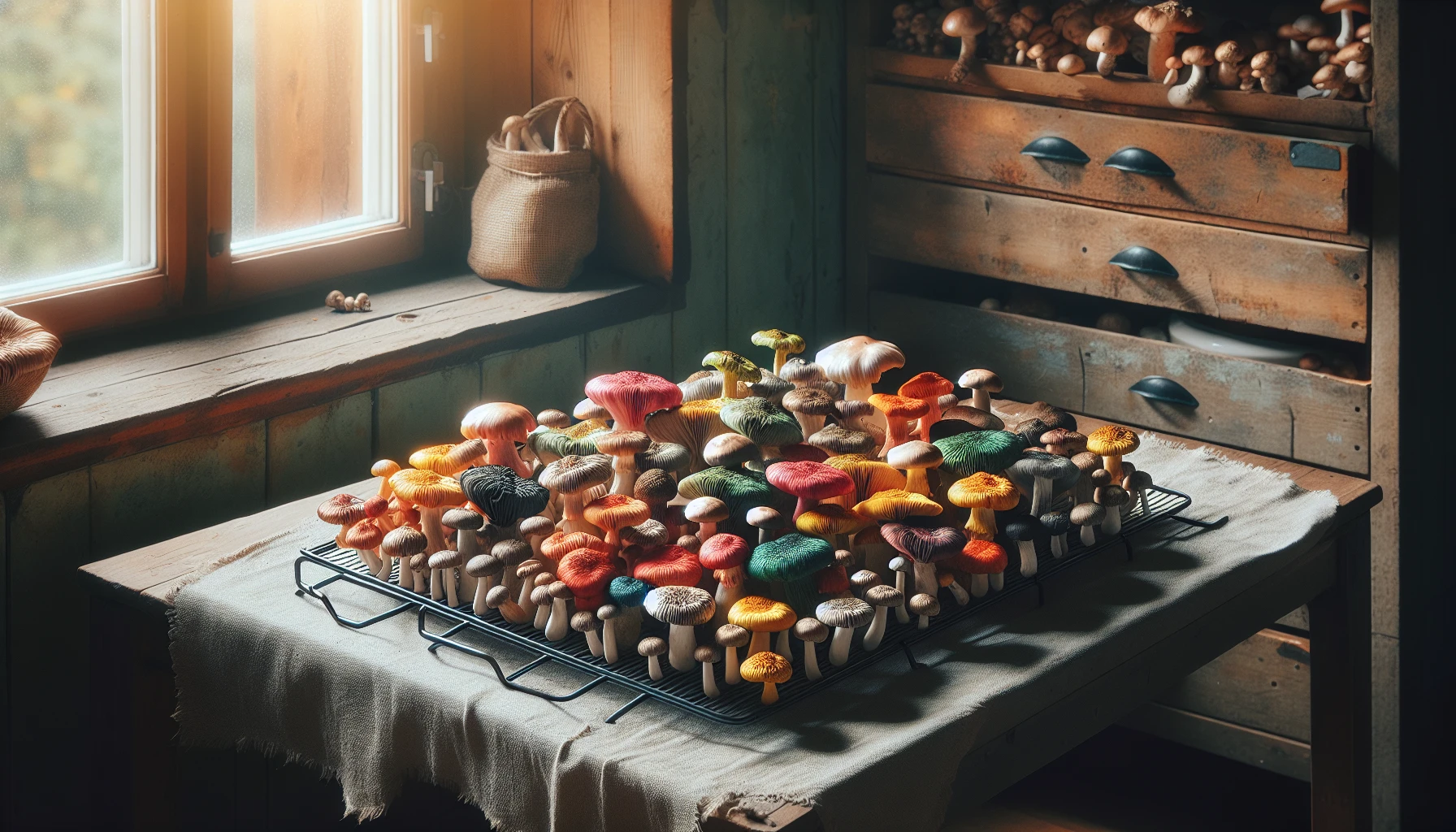
Air-drying mushrooms indoors is a cost-effective and straightforward method that allows you to preserve your mushrooms without the need for a dehydrator or other expensive equipment. With proper setup, placement, and patience, you can achieve perfectly dried mushrooms using this method.
To air-dry mushrooms indoors, set up a drying station with adequate airflow by using a drying rack or mesh screen placed on top of a baking sheet. Ensure the area is free from direct sunlight, heat, and moisture to promote even drying and prevent mold growth.
To achieve successful indoor air-drying, maintaining proper airflow is key.
For optimal airflow when air-drying mushrooms, it’s important to place them properly. Here’s how:
Although air-drying mushrooms may take longer than other methods, the outcome justifies the wait. Depending on the size and type of mushrooms, air-drying can take anywhere from 1 to 3 days for complete drying. Be patient, and monitor the mushrooms regularly to ensure they are drying evenly and achieving the desired texture and quality.
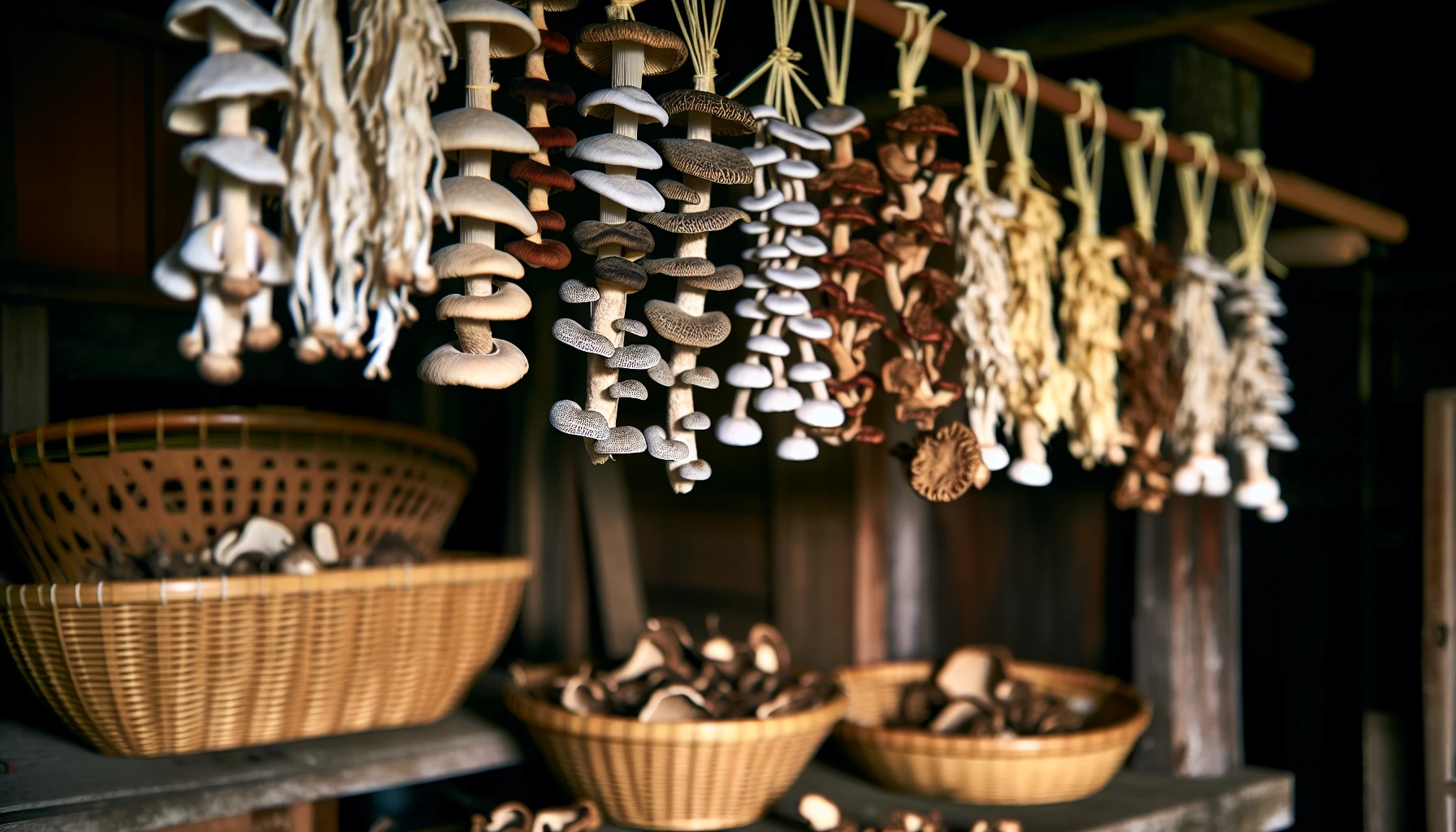
String drying is a classic approach to preserving mushrooms that brings a touch of tradition to the process. This method involves crafting a mushroom garland, hanging it in a well-ventilated area, and caring for the strung mushrooms to ensure optimal drying results.
To create your mushroom garland, follow these steps:
Once your mushroom garland is complete, hang it in a cool, dry, and well-ventilated area away from direct sunlight and moisture. Ensure there’s enough space between each mushroom slice for optimal airflow and even drying. The success of the string drying method heavily depends on the proper hanging and spacing.
During the string drying of your mushrooms, keep track of their progress and safeguard them from contaminants. Equal drying and maintaining quality throughout the process is of utmost importance.
Once the mushrooms are fully dried and have a satisfyingly crisp texture, carefully remove them from the string and store them in an airtight container for future use.
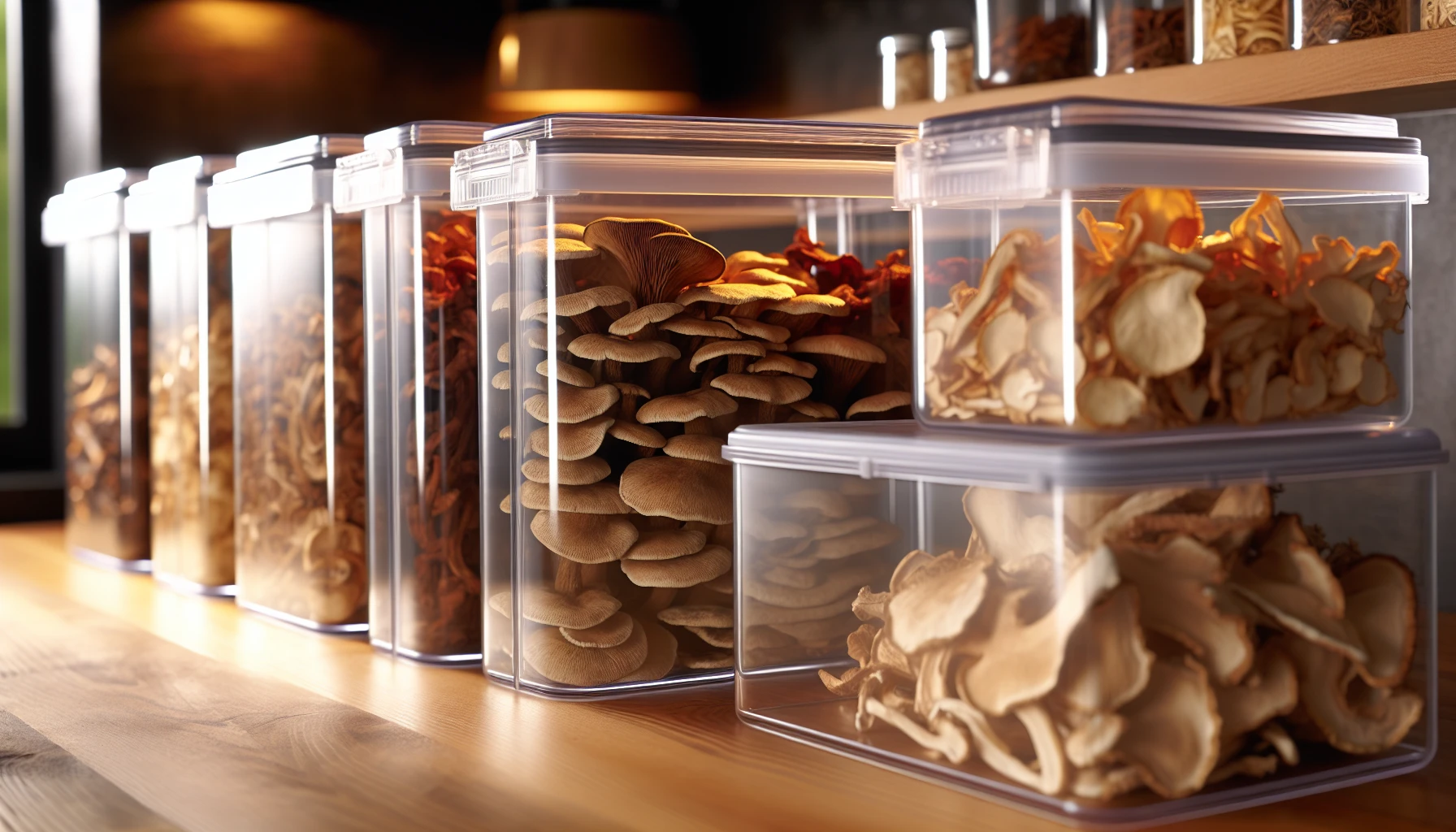
Whether you’ve used the oven-drying, sun-drying, or air-drying method, proper storage is crucial for maintaining the quality and flavor of your dried mushrooms. Here are some tips for storing dried mushrooms:
It’s important to allow your dried mushrooms to cool down completely before storing them. Allowing the mushrooms to cool ensures they’re fully dry and ready for long-term storage, maximizing their shelf life and preserving their quality.
Once they’re cool completely, they can be stored in airtight containers in a cool, dark, and dry place.
Store your dried mushrooms in airtight containers, such as glass jars, to prevent moisture and oxygen exposure, which can affect their flavor and texture. Keeping the mushrooms in a cool, dry environment also helps to maintain their freshness and quality. With proper storage, your dried mushrooms can stay fresh for up to a year.
To further protect your dried mushrooms from moisture, consider using desiccants, such as silica gel packets. Desiccants absorb excess moisture in the container, preventing mold growth and preserving the quality of your dried mushrooms.
Place a desiccant packet in the container to preserve surplus gourmet mushrooms and keep them in optimal condition.
Dried mushrooms are not only a fantastic way to preserve their flavors and nutrients, but they also open up a world of creative culinary possibilities. From rehydrating them for rich, intense flavor to making mushroom powder for a unique seasoning, there are countless ways to enjoy your dried mushrooms in various dishes.
To rehydrate your dried mushrooms and unlock their rich flavor, follow these steps:
Rehydrated delicious seasonal mushrooms, including thinly sliced mushrooms, add a depth of flavor to soups, stews, pastas, and more.
Mushroom powder is another versatile way to use your dried mushrooms. Simply grind the dried mushrooms in a coffee or spice grinder until they reach a fine powder consistency.
This powder can be used as a seasoning, added to sauces, soups, or even beverages for an earthy, umami flavor boost.
Understanding the legal requirements and logistics involved is crucial if you plan to sell your home-dried mushrooms. Ensuring compliance with regulations, proper packaging, and labeling will help you navigate the process of selling dried mushrooms successfully.
Research your local laws and requirements to guarantee a smooth and legal selling experience.
Drying mushrooms at home without a dehydrator is a simple and rewarding process. With various methods like oven-drying, sun-drying, and air-drying, you can preserve the delicious flavors and nutrients of mushrooms for future enjoyment. Proper storage and creative culinary uses further enhance the value of dried mushrooms. So, why not give it a try and experience the satisfaction of preserving and using your own dried mushrooms in a variety of tasty dishes?
Dry mushrooms naturally by arranging them in a single layer with good air flow on a mesh colander or grids and leave out to dry for about a week. You can also string them with twine, like a necklace and use a fan or radiator to speed up the process.
Yes, you can dry mushrooms in the oven! Set it to the lowest temperature setting and prop open the door to allow steam to escape. Flip the pieces over every hour and remove when they are completely dry.
Dried mushrooms take between 5 to 30 minutes to rehydrate, depending on their thickness. Simply add them to a bowl of tepid water and wait until they have softened all the way through.
It is not recommended to dehydrate whole mushrooms in a dehydrator as their mass is too dense and may not completely dry. This could also compromise the quality and food safety of your mushrooms.
Yes, you can dry different types of mushrooms together using these methods. Keep in mind that different mushrooms may have varying drying times and monitor their progress to ensure each type of mushroom is fully dried before removing them.